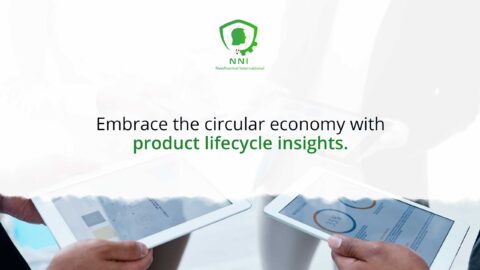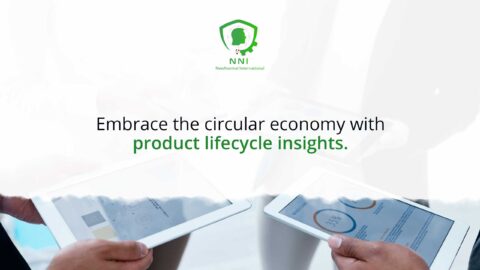Revolutionizing Business Practices for a Greener Future
The Imperative of Sustainability in Today’s Business World
Improving sustainability with carbon footprint tracking per product has become an increasingly critical aspect of modern business practices. As global awareness of environmental issues rises, businesses are expected to contribute positively towards sustainability. This imperative is not just a social responsibility but also a strategic move for long-term success.
The Role of Carbon Footprint Tracking in Sustainable Business Practices
In today’s environmentally conscious world, businesses are increasingly recognizing the importance of understanding and managing the carbon footprint of each product they produce. Carbon footprinting, the process of quantifying the total greenhouse gas emissions (GHG) associated with a product’s lifecycle, from raw material extraction to disposal, is a crucial step towards achieving environmental sustainability. By understanding the environmental impact of their products, businesses can identify areas for improvement, implement strategies to reduce emissions, and demonstrate their commitment to responsible environmental practices.
The carbon footprint of a product encompasses both direct and indirect emissions. Direct emissions are those that are produced directly from the product’s manufacturing processes, such as energy consumption, fuel combustion, and industrial processes. Indirect emissions, on the other hand, are those that are generated upstream or downstream of the production process, such as emissions from raw material extraction, transportation, product distribution, and product disposal.
To effectively manage a product’s carbon footprint, businesses must take a comprehensive approach that involves:
Carbon Footprint Assessment: The first step is to conduct a thorough carbon footprint assessment to identify and quantify the GHG emissions associated with the product’s entire lifecycle. This assessment should consider all relevant processes, from raw material sourcing to product disposal, and use recognized carbon footprinting methodologies.
Emission Reduction Strategies: Once the carbon footprint is understood, businesses can develop and implement strategies to reduce emissions. These strategies may include:
Adopting energy-efficient technologies: Replacing outdated equipment with energy-efficient alternatives can significantly reduce energy consumption and associated GHG emissions.
Optimizing manufacturing processes: Streamlining manufacturing processes, reducing waste, and adopting sustainable production practices can minimize emissions and enhance resource efficiency.
Selecting sustainable materials: Opting for renewable, recycled, or sustainably sourced materials can reduce the environmental impact of raw material extraction and processing.
Improving transportation efficiency: Optimizing transportation routes, utilizing fuel-efficient vehicles, and exploring alternative transportation modes can reduce emissions from product distribution.
Transparency and Communication: Businesses should be transparent about their product carbon footprints, communicating their findings to consumers and stakeholders. This transparency fosters trust, builds brand reputation, and encourages consumers to make informed purchasing decisions.
Continuous Improvement: Carbon footprinting is not a one-time exercise; it should be an ongoing process of measurement, reduction, and improvement. Businesses should regularly monitor and evaluate their product carbon footprints, identifying new opportunities for emission reduction and continuously striving to minimize their environmental impact.
By understanding and managing the carbon footprint of each product, businesses can take a meaningful step towards achieving environmental sustainability. This commitment to reducing emissions not only benefits the environment but also aligns businesses with the growing consumer demand for sustainable products and practices.
Integrating Carbon Footprint Tracking into Business Strategy
For business executives, mid-level managers, and entrepreneurs, the integration of carbon footprint tracking into their business strategy is essential. It not only aligns with global sustainability goals but also caters to the increasing consumer demand for environmentally responsible products.
Benefits of Carbon Footprint Tracking for Business Success
Tracking carbon footprints per product can lead to several benefits, including enhanced brand reputation, increased customer loyalty, and potentially, cost savings through efficient resource utilization.
Change Management for Implementing Sustainability Measures
Implementing carbon footprint tracking requires effective change management. This involves creating awareness among stakeholders, training employees, and adjusting existing processes to accommodate new sustainability measures.
Challenges and Solutions in Carbon Footprint Tracking
While the benefits are clear, the challenges of accurately measuring and managing carbon footprints cannot be overlooked. Solutions include investing in advanced tracking tools and consulting experts in sustainability management.
The Future of Business: Generative AI and Sustainability
Generative Artificial Intelligence (AI) has the potential to revolutionize sustainability practices, including carbon footprint tracking. AI can process vast amounts of data to provide insights for making more informed, sustainable decisions.
Leveraging AI for Enhanced Environmental Responsibility
With AI, businesses can predict and mitigate environmental impacts more efficiently, leading to more sustainable practices and products.
Conclusion Improving Sustainability with Carbon Footprint Tracking per Product
In conclusion, improving sustainability with carbon footprint tracking per product is not just an environmental imperative but also a business necessity. Through the use of advanced technologies like AI, effective change management, and a commitment to sustainability, businesses can achieve greater success while contributing positively to the planet.
#SustainabilityInBusiness, #CarbonFootprintTracking, #EcoFriendlyBusiness, #GreenInnovation, #AIforSustainability









